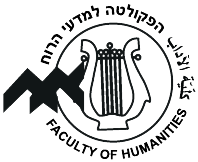What do we do in the International Archaeology program?
The International program in Archaeology is carried out in one of the world's most dynamic centers for prehistoric research. Throughout the course of our one-year MA program, we will explore the anatomical and cultural evolution of hominids over the last 1-2 million years.
The program aims to train students in archaeology, with an emphasis on prehistoric field work, ecological settings and fluctuating environments. This is achieved by combining training and practical experience through excavations, surveys, laboratory work and workshops. Our students gain valuable hands-on experience by participating in excavations and analyzing material culture remains from prehistoric sites.This is conducted in a stimulating environment, enhancing mutual interaction and the exchange of ideas and approaches, with opportunities to broaden horizons. Throughout the program, students will intensively study Mount Carmel as a case study. Mount Carmel is among the world's most intensively studied regions and is rich in important prehistoric sites. For over 80 years, Mount Carmel has been the focus of research regarding ancient human lifeways and adaptations to changing environments.
Why study Prehistoric Mount Carmel?
The Mount Carmel ecosystem is a UNESCO biosphere reserve (since 1996) and is famous for its contrasting landscape and unique prehistoric sites. The range is ecologically diverse, encompassing a complex mosaic of habitats. A great variety of plant and animal resources would have been available to prehistoric groups of hunter-gatherers in this area. This unique ecotone background provides an excellent opportunity to study prehistoric occupations in their particular environmental and ecological settings.
Numerous caves dot the mountain escarpments and hold a detailed record of palaeo-environmental fluctuations in both geological and anthropogenic contexts. An exceptionally long cultural sequence extending from the Lower Palaeolithic through the Neolithic representing at least 500,000 years of human evolution is exposed in the caves, rock-shelters and open-air sites of the region. Hundreds of prehistoric sites were discovered on the Mount Carmel ridge and its surroundings. Some of these sites were excavated in the past by world renowned scholars including the late Dorothy Garrod and Ofer Bar-Yosef. Others continue to be excavated today by leading prehistorians of the University of Haifa whereas many more sites await discovery. Sites such as the caves of Tabun and Skhul preserve some of the oldest burials known to us including remains of both Homo sapiens and Neanderthals, providing key evidence for the study of human evolution and interactions between these populations. A number of sites in Mount Carmel such as the caves of el-Wad, Nahal Oren and Raqefet have also yielded evidence for the shift from hunting-gathering to agriculture and the emergence of some of the earliest sedentary villages in the world.
Why Study Archaeology at the University of Haifa?
The University of Haifa is a center of excellence in prehistoric research. The department is widely acknowledged worldwide for its long history of accomplishments in the investigation of the prehistory of Mount Carmel. Several multidisciplinary projects including surveys, excavations and laboratory studies are currently conducted by members of the department on Mount Carmel. These include a wide variety of studies in biological evolution, palaeo-ecology, geomorphology, geology, archaeobotany, archaeozoology and lithic analysis. These studies are based on close cooperation among scholars from diverse disciplines.
We emphasize continuous contribution to regional and global knowledge and aim to incorporate the most recent developments in methodology and theory within our discipline. Our main goal is to provide opportunities for students to acquire hands-on experience with the fundamentals of prehistoric archaeology and to specialize in the varied subject matters of this discipline. We, therefore, strive to incorporate graduate students in our ongoing projects. Thus, we return to some of the important sites excavated generations ago, armed with revised research questions and new and sophisticated techniques, with our students participating in all aspects of the planning and day-to-day running of the field expeditions and laboratory studies.

